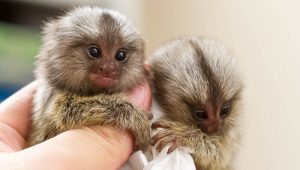Exploring the Charismatic World of Miniature Primates: A Comprehensive Guide
Introduction:
Miniature primates, often referred to as pocket-sized wonders, have captured the hearts of animal enthusiasts around the globe. These tiny creatures, like the Pygmy Marmoset, bring joy and fascination with their diminutive size and endearing features. In this comprehensive guide, we will delve into the captivating world of miniature primates, exploring their characteristics, habitats, behavior, and the unique challenges associated with their care.

Understanding Miniature Primates:
Miniature primates are a diverse group of small-sized primates that hail from different parts of the world. Among them, the Pygmy Marmoset stands out as the smallest monkey species, captivating people with its tiny frame and lively demeanor. Other notable miniature primates include the finger monkey, or marmoset, the tarsier, and the mouse lemur.
Characteristics:
- Size: Miniature primates are characterized by their small size, making them distinct from larger primate species. The Pygmy Marmoset, for instance, measures just a few inches in length, earning it the title of the world’s smallest monkey.
- Appearance: Despite their diminutive stature, miniature primates display a remarkable array of physical features. Their facial expressions, large eyes, and agile bodies contribute to their undeniable charm. Many of these species boast vibrant fur colors and patterns, adding to their visual appeal.
- Social Behavior: Miniature primates are often social animals, living in family groups that provide companionship and support. Understanding their social dynamics is crucial for their well-being in captivity.
Habitats:
Miniature primates inhabit various ecosystems, ranging from tropical rainforests to dry woodlands. Each species has adapted to its specific environment, showcasing the incredible diversity of these small primates across the globe.
Challenges in Care:
While miniature primates are captivating, they present unique challenges in captivity. Responsible ownership requires a deep understanding of their dietary needs, social interactions, and the space required for their physical and mental well-being. Additionally, legal considerations and ethical breeding practices play a crucial role in ensuring the welfare of these charming creatures.
Legal and Ethical Considerations:
Owning a miniature primate as a pet comes with legal and ethical responsibilities. Many countries and regions have strict regulations regarding the ownership of exotic animals, and potential owners must adhere to these guidelines to protect both the animals and the environment.
Conclusion:
In conclusion, the world of miniature primates is a fascinating realm filled with charm and uniqueness. From the playful antics of the Pygmy Marmoset to the intriguing behavior of the tarsier, each species offers a glimpse into the diversity of our primate relatives. As we appreciate these pocket-sized wonders, let us also commit to their conservation and responsible care, ensuring a bright future for these captivating creatures.
